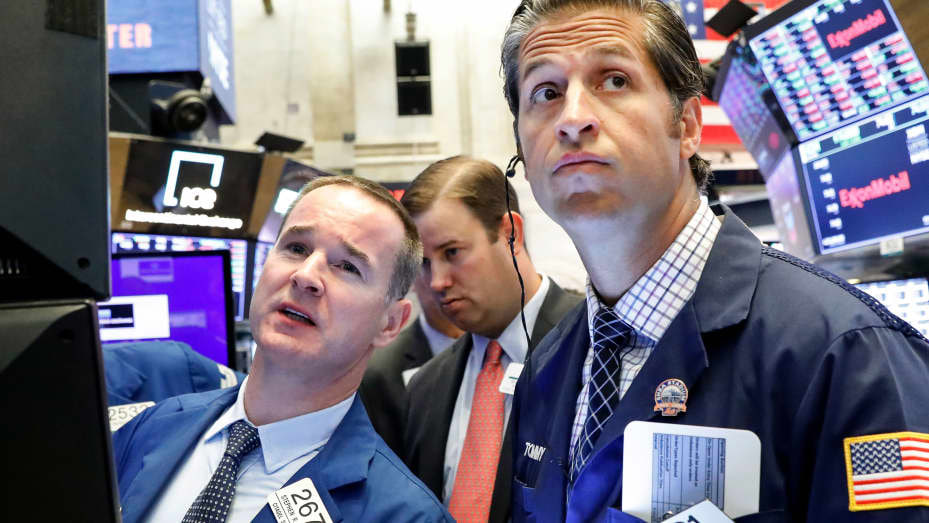Volatility Spikes: What Does It Mean for Your Portfolio?
Meta Description: The CBOE Volatility Index (VIX) has surged to its highest level since March 2023, signaling heightened market uncertainty. This article explores the reasons behind the spike and its potential impact on your investment portfolio.
The recent jump in the CBOE Volatility Index (VIX) has sent ripples through the financial world, prompting investors to question the stability of the market. The VIX, often referred to as the "fear gauge," is a measure of expected volatility in the S&P 500 index over the next 30 days. Its recent surge to its highest level since March 2023, reaching an impressive 24, signals a significant increase in investor anxiety and uncertainty. This article delves into the reasons behind this spike and explores its potential implications for your investment portfolio.
Understanding the VIX
Think of the VIX as a barometer of market sentiment. When investors are feeling optimistic and confident, they expect the market to move in a relatively predictable range, resulting in a lower VIX. Conversely, when fear and uncertainty grip the markets, investors brace themselves for larger swings, pushing the VIX higher.
What's Driving the Volatility Surge?
Several factors are contributing to the recent spike in the VIX:
- Inflation Concerns: Stubbornly high inflation continues to be a major worry for investors, forcing central banks to maintain aggressive interest rate hikes. The potential for a recession fueled by these hikes weighs heavily on market sentiment.
- Geopolitical Uncertainty: The ongoing war in Ukraine, escalating tensions with China, and the global energy crisis have fueled uncertainty and volatility in financial markets.
- Economic Slowdown: Global economic growth is slowing down, adding to the concerns about a potential recession. This has led investors to seek refuge in safe-haven assets like gold, further impacting the market's volatility.
- Earnings Season: The upcoming earnings season is expected to reveal the impact of inflation and interest rate hikes on corporate profits. This could further fuel volatility as investors analyze company performances and adjust their positions.
Potential Impact on Your Portfolio
The elevated VIX has significant implications for your investment portfolio:
- Increased Market Fluctuations: Higher volatility means more significant price swings in individual stocks and broader market indices. This can lead to larger gains or losses in your portfolio.
- Risk Aversion: Investors tend to become more risk-averse in volatile markets, leading to a shift towards safer assets like government bonds and cash. This can potentially impact the performance of riskier assets like stocks.
- Strategic Adjustments: With heightened volatility, investors need to carefully evaluate their risk tolerance and adjust their investment strategies accordingly. This may involve reducing exposure to riskier assets or diversifying portfolios to mitigate potential losses.
Navigating Volatility: A Guide for Investors
Here are some practical strategies for navigating the current market volatility:
- Review Your Risk Tolerance: Reassess your risk tolerance and ensure your investment portfolio aligns with your current comfort level.
- Diversify: Spread your investments across different asset classes, sectors, and geographies to reduce overall portfolio risk.
- Focus on Long-Term Goals: Resist the temptation to make impulsive decisions driven by short-term market fluctuations. Stay focused on your long-term investment goals.
- Seek Professional Advice: If you're unsure about navigating market volatility, consult with a financial advisor to create a personalized investment strategy.
Key Takeaway: The recent spike in the VIX is a clear signal of heightened uncertainty in the market. While it's impossible to predict how long this volatility will last, understanding its drivers and potential impact is crucial for investors. By staying informed, adjusting your investment strategy, and maintaining a long-term perspective, you can navigate this turbulent period effectively.
FAQs
Q1: What is the VIX, and why is it important?
A: The VIX, or CBOE Volatility Index, is a measure of market volatility, specifically the expected volatility of the S&P 500 index over the next 30 days. It provides a real-time gauge of investor sentiment and anxiety. A higher VIX indicates increased fear and uncertainty in the market, potentially leading to more significant price swings.
Q2: What are the key factors driving the recent VIX surge?
A: The current spike in the VIX is driven by a combination of factors, including persistent inflation, geopolitical tensions, concerns about an economic slowdown, and the upcoming earnings season. These uncertainties create a climate of fear and risk aversion among investors, pushing the VIX higher.
Q3: How does the VIX impact my investment portfolio?
A: A higher VIX can lead to increased market fluctuations, making your portfolio more susceptible to larger gains or losses. It can also make investors more risk-averse, leading to a shift towards safer assets and potentially impacting the performance of riskier assets like stocks.
Q4: What should I do about my investments during a period of high volatility?
A: Review your risk tolerance and ensure your portfolio aligns with your current comfort level. Diversify your investments across different asset classes, sectors, and geographies to reduce overall portfolio risk. Focus on your long-term investment goals and avoid making impulsive decisions driven by short-term market fluctuations.
Q5: Should I sell my investments when the VIX is high?
A: There's no one-size-fits-all answer to this question. Selling investments during a period of high volatility can lead to losses if the market rebounds. However, if your risk tolerance has changed or you need the funds for other reasons, selling may be appropriate. It's best to consult with a financial advisor to determine the best course of action.
Q6: What are the potential long-term implications of a sustained high VIX?
A: A sustained high VIX could indicate a prolonged period of market uncertainty and volatility, potentially leading to slower economic growth and a dampened investment environment. It could also signal a shift in investor sentiment towards risk aversion, impacting the performance of riskier assets.
Conclusion
The recent spike in the VIX serves as a reminder that markets are inherently volatile, and unexpected events can significantly impact investor sentiment and asset prices. While navigating this volatility can be challenging, staying informed, adjusting your investment strategy, and maintaining a long-term perspective can help you weather the storm and achieve your financial goals. Remember, investing is a marathon, not a sprint, and success often comes from staying disciplined and focused on your long-term objectives.



